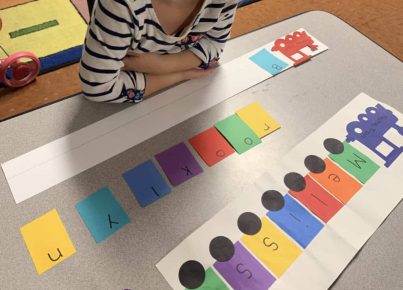1. Playdough play: Have your child make various shapes and lines using playdough, which helps improve fine motor skills and hand strength needed for writing.
2. Sensory writing: Fill a tray with sand, flour, or shaving cream, and encourage your child to draw letters and shapes using their fingers.
3. Dot painting: Provide your preschooler with dot markers or q-tips dipped in paint to create shapes and patterns on paper, helping develop their hand-eye coordination.
4. Stringing beads: Thread beads onto a string or pipe cleaner to improve fine motor skills while also discussing letter-like shapes.
5. Chalkboard practice: Encourage your child to draw shapes and letters on a chalkboard, which provides easy erasing for multiple attempts at the same writing activity.
6. Handwriting sheets: Printable handwriting sheets can help children trace letters and shapes while learning proper letter formation.
7. Finger puppets: Act out stories using finger puppets to help your child practice storytelling and sentence structure before putting it down in writing.
8. Building blocks: Constructing structures with Lego or other building blocks helps develop spatial awareness and fine motor skills necessary for writing.
9. Coloring books: Coloring within the lines helps preschoolers develop hand control for smoother writing motions later on.
10. Maze games: Guide your child through simple maze games on paper to help them understand beginning-to-end strokes in written letters and numbers.
11. Shape-sorter toys: Practice recognizing and naming basic shapes with shape-sorter toys to strengthen pre-writing abilities.
12. Puppet shows: Encourage your preschooler to write short scripts or descriptions of puppet shows they create themselves, helping them connect written language with oral storytelling.
13. Connect-the-dots drawings: Join numbered dots with lines to complete an image, developing hand-eye coordination along with numeral recognition needed for colored writing.
14. Alphabet puzzles: Assembling alphabet puzzles exposes children to letter shapes and helps them underscore the importance of well-formed letters in writing.
15. Tracing apps: Fun tracing games on tablet devices offer an interactive way for preschoolers to practice letter formation and build muscle memory for future handwriting tasks.
These activities not only help preschoolers develop necessary pre-writing skills, but they also encourage creativity, problem-solving, and strategically breaking down tasks into manageable steps. Providing your child with a variety of opportunities in a fun, engaging format sets them on the right path for academic success later on.




